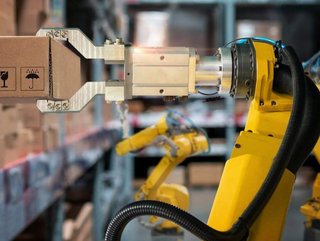AI set to give logistics tech real-world vision - DHL

DHL has published a study exploring the future in logistics of AI tech that allows computers to see and understand. The company offers insights into how this is likely to reshape the industry, and usher in a “new era of interconnectedness and efficiency”.
The report – Trend Report: Ai Driven Computer Vision – is aimed at logistics professionals, technology enthusiasts and advocates for sustainable supply chains.
AI has long been touted as the technology that will reshape the future of logistics, but much of this has been focused on generative AI technology.
DHL says computer vision systems gather information from visual inputs such as digital images and videos. By collecting and processing visual data using algorithms, such systems can not only make recommendations but also take action.
The company's report comes at a time when the global computer vision market is building steadily, with its value predicted to rise from USD$9.40bn in 2020 to $41.11bn in 2030.
Against this backdrop, DHL expects computer vision to become a fixture in the logistics industry within the next five years, and predicts it will drive logistics forward by enabling more automated and efficient processes, as well as more sustainable and safer operations.
Computer vision helping shape route optimisation
Areas it say computer vision will see greatest traction include route optimisation and demand prediction. Other areas DHL says are being advanced by computer vision are:
- Interactive AI, requiring human-user input
- Digital twin technology
- Drones, controlled by cameras that can be trained to detect people and objects
- Edge computing, for processing high-quality visual data from cameras and sensors
- Mixed reality, which integrates into the real world by creating 3D overlays, typically to help with advanced inspection procedures.
- Robotics, to help robots perceive, understand and react to the physical environment in which they operate.
Dr Klaus Dohrmann, VP, Head of Innovation & Trend Research with DHL, says in his foreword to the report: “For good reason, AI is one of today’s most hyped topics and it comes in several different shapes and sizes.
“A highly significant development in the AI space is AI-driven computer vision, a technology that is already deployed in a range of applications at an increasingly stable and dependable level.
“This DHL trend report on AI-driven computer vision in logistics delves into the dynamic intersection of computer vision, AI and logistics, emerging as a compelling arena of transformation.
“We think there has never been a more exciting time for industries and logisticians to work together to leverage the full potential of computer vision and AI for the benefit of organisations, our colleagues in operations, and for improvements in environmental sustainability.”
AI-driven computer vision 'a challenge for logistics'
Dohrmann goes on to outline the challenges that come with integration of computer vision into logistics.
“As with any technological leap,” he says, “there are considerations of data security, ethical implications, and the need for upskilling the workforce.”
He adds: “The convergence of human expertise and AI augmentation requires thoughtful orchestration and collaboration from all of us. By working closely with our customers, jointly developing solutions and copiloting proof-of-concept projects in computer vision, we at DHL are staying ahead of the game.
“We believe in innovation beyond potential – there is always a better way to operate, plan, implement, connect, and share. As we seek to improve our own logistics capabilities and those of our customers, we constantly look for fresh approaches and valuable new technologies.”
This, says Dohrmann, is why DHL “engages with the brightest tech innovators and disruptors around the world”.
He continues: “If a technology development or application can contribute to a better customer experience, higher customer satisfaction levels, improved efficiency, and more sustainable operations, then we’re interested.”Dohrmann






